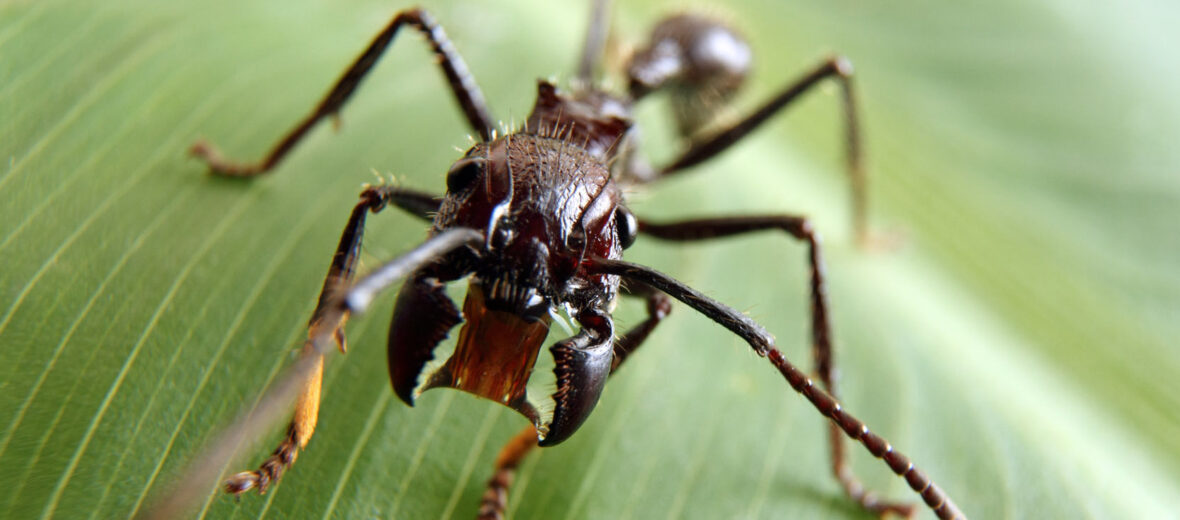
The bullet ant is so called because of their incredibly painful sting. Their venom causes pain equal to that of being shot by a bullet! It has also been described as pain equal to walking, barefoot, on red hot coals with nails driven into your feet. They have one of the most painful stings in the insect world! It’s right up there with the tarantula hawk and executioner wasp.
First the Stats…
Scientific name: Parponera clavata
Length: Up to 1.2 inches
Lifespan: Up to 90 days
Now on to the Facts!
1.) The bullet ant is a dark black cherry color with a large head. They also have very large mandibles (jaws) that have a very strong grip. They typically use their mandibles to eat, but they will also latch on to a prey item, like a human’s hand, and sting.
2.) The countries where the bullet ant is present include: Honduras, Costa Rica, Venezuela, Colombia, Ecuador, Peru, Nicaragua, and also Brazil.
3.) Bullet ants are typically found at the base of tree trunks with trees that have what is called buttress roots (large, wide roots on all sides of a shallowly rooted tree).
4.) The worker ants are among the largest in the world and grow to around 1.2 inches in length. Bullet ant queens are only a tad bit larger than the worker & soldier ants.
5.) The bullet ant eats nectar, tree sap and small insects and their larvae, including: termites, crickets, katydids, meal worms, wax worms and flies.
But wait, there’s more on the bullet ant!
6.) Worker ants gather food while the soldiers guard them, for protection.
7.) The Bullet Ant worker will carry drops of nectar to the nest in its mandibles. Then the nectar is shared with other workers and the larvae.
Did you know…?
Boys in Amazonian tribes prove they are ready to become men by undergoing a bullet ant initiation ceremony which involves donning special mitts filled with dozens of ants. The boys get stung many times in order to prove they are ready to become tribal warriors.
8.) If the bullet ant is threatened they will release a pheromone (scent). If this scent isn’t responded to they will begin stinging.
9.) Typically, the colonies range in the hundreds. The ants vary in appearance based on their job in the colony.
10.) These ants are known for being highly aggressive. If someone or something intrudes on their territory, the bullet ants will attack and sting the intruder repeatedly until the threat of danger is removed.
Now a Short, Painful Bullet Ant Video!
Be warned, the video is pretty intense.
Also, check out the Critter Science YouTube channel. Videos added frequently!
Want to suggest a critter for me to write about? Let me know here.



